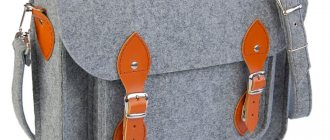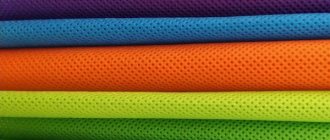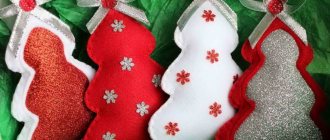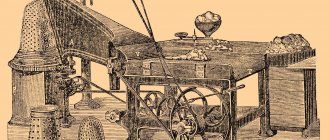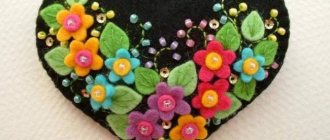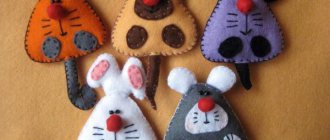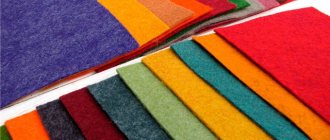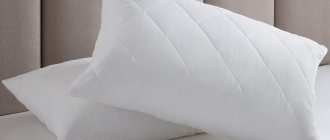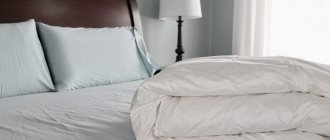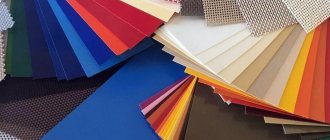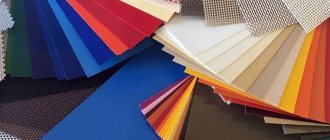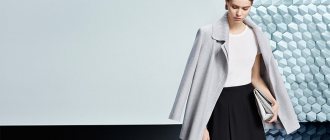Felt is a felt-type fabric that has excellent performance and performance characteristics; we will describe them below in our article with a photo and answer the question: “How much does a meter of felt cost?”
Felt material, what is it, is a type of felt, which is produced from the fluff of goats and rabbits (it is quite thin). At the same time, if the felt material has a thick, soft and short pile, then it is usually called velor.
Felt fabric has a rather unusual structure and, by and large, is not fabric. It can be classified, rather, into the category of non-woven materials, because production is carried out using the technology of felting wool. In other words, there are no intertwined fibers here. You can find all woolen materials here.
Main characteristics
Dense and rigid felt fabric, a photo of which can be viewed on our website, according to GOST, is produced using rabbit and goat hair (or artificial substitutes). This material is quite soft to the touch, pleasant, has good strength characteristics and a relatively high density. The surface can be piled or smooth.
Among the interesting properties of felt are:
- Plastic;
- Pleasant tactile sensations;
- High strength (difficult to tear with hands);
- The edges do not crumble;
- The material has no reverse side.
Kinds
Sheet and roll, artificial and natural, wool and thin, in a word, felt can be different. The main material in texture and properties is considered to be natural wool material, which has good antiseptic and thermal insulation properties. Parts for clothing, hats, and shoes are made from it.
Based on the length of the villi, the following types are distinguished:
- Suede - no more than 0.5 mm
- Short pile (with short thick and soft pile) - up to 1.5 mm
- Velor - up to 2.5 mm
- Long pile - up to 12 mm
The composition of felt fabric depends on its type:
- Wool blend: obtained from a mixture of wool and viscose. Moderately soft and easily painted in bright areas.
- Acrylic (artificial): obtained from synthetic fibers. The main advantage is that it does not lose its shape
- Bamboo: obtained from a mixture of bamboo fiber and viscose. It is very durable and pleasant to the touch.
Read the article: “Cashmere - what kind of fabric is it”, you will learn all the features.
What material is it made from?
Thanks to its properties and bright colors, felt is in demand among handmade artists, fashion and interior designers. The scope of application of woolen material is clothing, hats and shoes, then accessories, crafts and children's toys, as well as the design of albums and boxes for the decoration of various items.
Felt is also in demand in furniture production for covering upholstered furniture and chairs, as well as for sewing covers. Felt is also used in the automotive industry for filters and technical gaskets.
Which one is suitable for needlework?
The choice of material depends on the type of work planned. For children's toys, polyester is a good option, and for decorating albums, half-woolen felt. For accessories and decorative crafts, felt fabric is used in sheets or in the form of yarn for dry felting.
Thin fabric can be used to make stuffed and multi-layered toys, decorations and appliqués. It is suitable for needlework, combining with fabrics and embroidery. Thick and dense samples are used for large jewelry, contour products, phone cases, bags and decorative belts.
The appliqué method produces flat and three-dimensional objects. After cutting, the parts are glued or sewn. The edges do not crumble and do not require additional processing. Dry felting is used to create three-dimensional toys, jewelry and accessories. The shape is obtained by repeatedly pulling the thread through a ball of fibers. Another technology involves the use of a padding polyester base on which the yarn lies.
Advice!
It is not recommended to use cotton wool, fabric scraps or batting to fill toys and other products. They do not provide uniform filling and the item turns out heavy. The best option is padding polyester, holofiber, foam rubber or camphor.
Felt in clothes
The production of coats and jackets, hats and blouses, blouses and trousers has been established from felt. The products are exclusive and are sold in specialized outlets.
Scope of application
Despite many positive characteristics, today felt fabric is used quite rarely. At the same time, the production of caps, coats, hats, sweaters, pants and other items of clothing has been established, but it is difficult to find such products in stores in a wide variety (rather, only at specialized points of sale).
Decorative felt, in turn, has its own popular area of use - the production of various fabric crafts, toys and other things, the main operational value of which is the role of decoration. The fabric is actively used in the handmade industry.
Which felt is best to buy?
Before purchasing felt, consider:
- What are you going to sew?
- What size will the product be?
- How well should it keep its shape?
- Will this product be subject to heavy use (frequent washing)?
- Will this product come into direct contact with skin or hair?
Depending on the answers, you will understand what qualities of felt will be of paramount importance to you.
Felt is usually sold in rectangular sheets of A4 or A3 format. Before purchasing, it is better to accurately calculate how many sheets you will need to make the product.
Advantages and disadvantages
The advantages of thin felt have already been mentioned above. In this case, it is necessary to highlight the main disadvantages of the fabric, which must be taken into account before direct use:
- The material shrinks over time, so clothes and decor made from it gradually acquire an unattractive appearance;
- Plain and colored felt is a breeding ground for moths;
- The fabric is highly hygroscopic, so it easily absorbs moisture.
Wool fabric
What is felt, considering its composition? This is a material that can consist entirely of either pure wool or artificial fibers. Wool felt is considered to be of higher quality, dense, and unable to pill over time. It has a very pleasant texture, which can be rough and, conversely, softer, linty. Thanks to its natural composition, this material is very environmentally friendly and safe, but it does not hold its shape well, because it is quite loose. Pure wool felt is not particularly in demand in stores. Its price is slightly higher than its analogues and ranges from 150-300 rubles per sheet measuring 30x30 cm. It is used mainly for making jewelry, cases, handbags, as well as for decorating clothes and interiors.
Interesting Facts
On the modern market you can find several types of felt fabric: wool (more than 90% wool) or wool blend (about 50%). In addition, many modern companies make the material not from wool, but from a polyester or acrylic base. That is why during the purchase it is necessary to take into account the composition of the fabric material, its type and other aspects.
Felt is very popular among craft products and canvases. The price per meter starts from 150 rubles per meter.
How to wash felt? Manually, in warm water with the addition of a product. In addition, our portal describes in detail how to properly care for felt fabric so that it does not shrink during direct use and does not lose its original appearance and bright colors over many years.
Watch the video for tips on working with felt:
How to care for felt products?
Although felt, especially wool, has dirt-repellent properties, the need to clean it periodically arises. Dust is removed with a vacuum cleaner or brush, and shiny spots are wiped with fine salt. The best way is professional dry cleaning; at home you can use ammonia or gasoline.
Small items (if they are made without painting) can be washed, taking certain precautions. To do this, they are immersed in a warm solution of detergents, and lightly wiped with a brush, then rinsed in clean water and lightly squeezed. After this, the product is given the required shape, placed on an absorbent lining and dried away from heaters and sunlight.
Reviews
Inna: I just recently became interested in creating crafts. I love making flowers and toys; it turns out very original and interesting. Although I’m still getting the hang of it, I can say with confidence that this material is very comfortable and ideal for these purposes.
Marina Sergeevna: My daughter makes toys from this material at school in a circle. Very easy to process, and the result is wonderful! She does it so easily and beautifully!
Alina: I'm crazy about felt hats, I have about 5 of them in my wardrobe. The wide brim hat is my favorite. They are easy to care for, the main thing is to dry them properly after washing.
Simple stitches for working with felt
The components of felt crafts can be sewn together using almost any seam. Moreover, a seam can become both a way to connect parts and a decoration.
Seams on a felt product can be done either by hand or on a sewing machine.
YOU WILL NEED:
Check out the types of decorative hand stitches that will look beautiful on felt crafts
Heart decorated with decorative stitches. Author - Tatyana Maksimenko
To sew two identical parts together, a regular buttonhole stitch or a needle-forward stitch is most often used. But even a buttonhole stitch can be turned into an original decoration.
Buttonhole seam options
